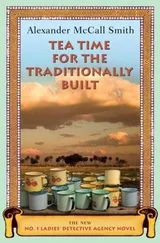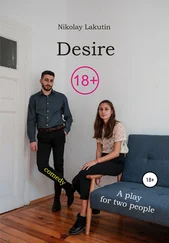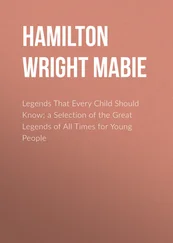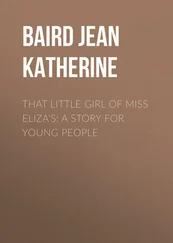When the news is over, my father goes back to poking at the TV. On one of the channels he flicks through, the same story from Johannesburg is repeated, this time in Xhosa.
I’ve been hearing and reading a lot about xenophobia in South Africa since I’ve been back here. In Knysna, black people complain about Zimbabweans, Somalis and Nigerians coming into the townships, bringing with them drugs and violence while taking jobs, houses and women. White people complain their taxes are being spent on giving those illegal immigrants special treatment. Coloured people complain they’ve been forgotten.
From what I’ve heard, it’s the black people who are most xenophobic. And in Knysna, the tension between locals and immigrants, or ‘newcomers’, has led to clashes in the townships at least once in the past year.
The stories I’ve heard from various people in town are confirmed by reports on national newspapers’ websites. During what was called South Africa’s ‘xenophobic unrest’ in 2008, several Somali-run shops in Knysna’s townships were looted and their owners driven out of the community. Over a hundred foreign nationals from Somalia and other African countries fled the townships and sought refuge at the police station. Teachers at the local schools were told not to send any foreign children back to the townships. For months, the foreigners had to stay in tents on the rugby and hockey fields at Knysna’s sports park until it was safe to return to their homes.
It seems there’s still tension in Knysna now.
One of the main stories in the Knysna-Plett Herald these last few weeks has been about a group of African traders who’ve been removed from their long-established roadside market by the Knysna Municipality. The reason for it wasn’t xenophobia – the municipality was planning to widen that stretch of road and the traders were in the way. But the public response to the money spent moving the traders – to a new site with pre-built market stalls, toilets and twenty-four-hour security – has had definite xenophobic overtones.
It’s not that the traders are ‘newcomers’ – many of them came from Zimbabwe and Nigeria as far back as ten, fifteen years ago. But in many people’s eyes they’re still nothing more than illegal immigrants.
According to one angry letter in the Herald , ‘These illegals are not “previously disadvantaged”. They come to our country of their own free will and are now using us. They are opportunists and should be treated as such.’
This xenophobic attitude seems to be common in the new South Africa, but it’s news to me. It has never made the headlines in the UK and my mother, who’s always quick to phone me when a family friend has died or there’s been some or other scandal in the government, has never mentioned it either.
So when my mother invites me on a diversity training course organised by her work, I go along in the hope that it will shed some light on xenophobia and how South Africans are being advised to deal with it.
The course is held at a home for the aged in Hornlee where we have a large, cold room to ourselves. There are fifteen people taking part, most of them employees at Epilepsy South Africa, plus a handful from other charitable organisations in neighbouring towns.
The course-leader, a man called Ismaiyili from somewhere in North Africa, divides us into groups, deliberately mixing white, black, coloured, English, Afrikaans, Xhosa, young, old, male and female. I’m separated from my mother and end up in a group with a black man, two black women and two coloured women.
From the start, xenophobia features high on the agenda – as high as the first page of the handbook we’re given, where it says that a recent report on migration in South Africa showed that ‘the practice of xenophobia by South Africans is amongst the highest in the world’.
Ismaiyili asks us to discuss, in our groups, whether foreigners should be allowed to set up a business or get a job in South Africa.
Within our group, there’s a barrier to our communication: the older of the coloured women speaks only Afrikaans. And the younger of the black men refuses to speak anything other than English. I end up translating for the coloured woman’s benefit.
When I was growing up, it was mandatory for white children to study both English and Afrikaans at school.
Having established in our group that by ‘foreigners’ we mean Zimbabweans, Nigerians, Somalis and Mozambicans, my three black team-mates insist that those foreigners shouldn’t be allowed to work in South Africa at all.
‘They come here and they take our jobs,’ says one.
‘And they’re cheap labour,’ says another. ‘We can’t compete.’
I try to be impartial and tell them how the same could be said of me going to London and working there.
They don’t seem convinced, but eventually my black team-mates concede that it’s OK for foreigners to start businesses in South Africa, but only if they give South Africans jobs. The coloured people agree.
The rest of the day deals with more general diversity in the workplace. Some of the most surprising moments come when the older black and coloured delegates share their stories of apartheid and how they were treated ‘back in the day’.
The most junior delegates, about ten, twelve years younger than me, are amazed and amused at the stories of a world that seems foreign to them. And yet they fail to see the parallels with their own attitudes towards their Zimbabwean, Nigerian, Somali and Mozambican neighbours.
The next day, I take my research to the library and the Internet, where I scour news reports, articles and readers’ letters on the subject.
Unemployment seems to be one of the main reasons behind the xenophobia. Black South African workers are more aware of their rights than ever, and unions are quick to stage walkouts over pay. The illegal immigrants, on the other hand, work cheaply. And they work hard.
Housing is another issue. For years, the government has been building identical simple brick houses in townships across South Africa as part of its Reconstruction and Development Programme, or RDP. The houses are meant solely for South Africans, but some foreign nationals from neighbouring countries have found their way into them, usually by renting them off cash-strapped South Africans who are willing to go back to living in a shack in their own back yard if it means earning some extra money.
I’ve heard that some RDP homeowners have even ‘sold’ their houses in unofficial transactions for as little as a month’s wages. I wonder whether they realise they’ve blown their one chance to get a house from the government.
The black families who are still waiting for their houses in Knysna’s townships after fifteen years of promises from the ANC government are understandably angry when they see the Zimbabweans and Nigerians moving in.
It’s hard to believe that, less than forty years ago, there were hardly any black people here.
Chapter 8
1972
Owéna hadn’t come across many black people in her life. Growing up in the Western Cape, the non-white people she encountered were mostly coloured. That was because the government had declared the entire region a ‘coloured labour preference area’, meaning that, by law, manual and semi-skilled jobs were to go to coloured people over black.
If a black person wanted to try their luck getting a job in the Western Cape, or indeed anywhere in South Africa, they also had the pass laws to contend with.
The pass laws were part of the apartheid government’s plan to restrict the influx of black people into ‘white’ South Africa from the African homelands. Created by the National Party government in the 1950s, the homelands were ten regions within South Africa’s borders where the different black tribes were meant to live, develop and work among their own. Despite black South Africans outnumbering white by around eight to one, the ten homelands together made up just thirteen per cent of the country’s land.
Читать дальше












